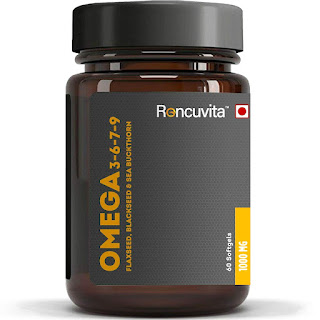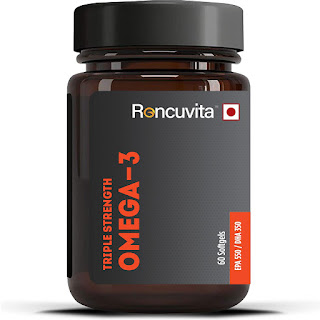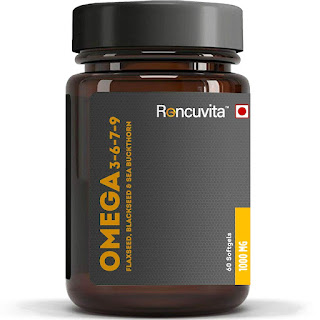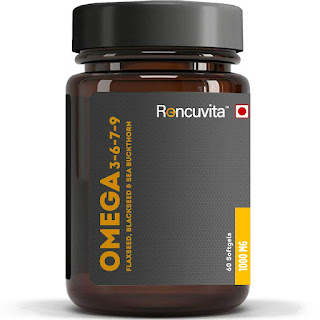This
article is about how the human body uses omega 3 and omega 6 fatty acids. Omega
3 and omega 6 fatty acids are necessary for cellular development and function.
Essential fats are also important for skin and hair health, as well as blood
pressure. They are also thought to play a role in cognitive development and
mood. The purpose of this article is to educate the reader about how to choose
the right type of oils for their needs! A lot of the commercial fish oils on
the market are very high in omega 6 and may not be helping your body achieve
the ideal ratio.
What is Omega 3?
Omega
3 is a type of polyunsaturated fatty acid and it can be found in certain types
of fish. It is also found in plant oils like walnuts, pumpkin seeds, and
flaxseeds. It is considered an essential fatty acid because the human body
needs it to function properly. Omega 6 is another
type of polyunsaturated fatty acid that can be found in plants as well as
animal tissues such as meat, eggs, and dairy products. The “good”
polyunsaturated fatty acids are now being recommended by medical professionals
for a variety of daily uses.
How to Choose the Best Omega 3 Supplement for You?
There
are many supplements on the market these days that contain Omega 3. This means
you have to do some research on which ones are the best! The first step is to
ask your doctor what he or she recommends and what other Omega 3 supplements he
or she is familiar with. Always make sure you are getting the right dosage and
that it is a high quality product. You don’t want to take something that has
too much or too little of the Omega 3 fatty acid. If
you have any questions regarding this, please call the office of your medical
doctor. The Omega 3 fatty acid is a polyunsaturated fat that is essential for
the proper functioning of the body’s nervous system.
What is Omega 6?
Omega
3 and Omega 6 are essential fatty acids that people need. In general, they are
in the form of triglycerides and can be found in seafood, plants, nuts, and seeds.
The two main types of Omega 3 fatty acids are alpha-linolenic acid (ALA) and
docosahexaenoic acid (DHA). Omega 3 is the most important of these because it
is shown to have a healthy effect on heart health. It is also a building block
for cell membranes, which are critical to the physical health of our body.
Omega 6 is the second most important fatty acid because it is vital for brain
function, growth and repair of cells.
Omega
3 and Omega 6 are found in high quantities in seafood and meats, but can also
be obtained from dark green leafy vegetables and nuts. The table below shows
the approximate percentage of Omega 3 and Omega 6 in
different foods. Although fish and meats are excellent sources of these
essential fatty acids, the majority of them is destroyed during the cooking
process. The result is that we do not get any benefit from the essential fatty
acids during our daily diet. A much better strategy is to take omega 3 and 6
supplements because they are very easy to absorb by the body.
Commonly Consumed
Foods with Omega 3 and Omega 6
Omega
3 and Omega 6 are two fatty acids that are found in many different types of
food. They're commonly associated with fish, nuts, and oils such as olive oil.
Omega 3, an essential fatty acid, promotes brain health and is believed to help
reduce inflammation. Meanwhile, Omega 6 fatty acids may be inflammatory and are
believed to promote inflammation.
Foods High In Omega
3 and Omega 6
While
many types of fish such as salmon, tuna, mackerel, and sardines are high in
Omega 3 and are considered a good source of these fatty acids. They're also one
of the best sources of Omega 6's. Since they're so high in these fatty acids,
they're a good source of both types. Fish oil is another type of food high in
Omega 3 and a good source of these fatty acids. One tablespoon contains 12 mg
of Omega 3, but it's also high in the Omega 6 fatty acid, DHA.
This
can make it hard to get enough Omega 3 from fish oil alone unless you eat a lot
of fish and supplement it with something else. Omega 3 usually comes from fish,
but for some people their body doesn't produce enough to get the job done.
That's why you need to be careful. Since fish oil can be expensive, many people
don't include it in their diet. You can take fish oil supplements, but you
should always check the labels. The amount of Omega 3 in a supplement might be
different from what you're used to.
Benefits of Omega 3
and 6
Omega
3 and 6 are essential fatty acids. They are a group of long-chain,
polyunsaturated fatty acids. The two short-chain omega 3 fatty acids,
alpha-linolenic acid (ALA) and linoleic acid (LA), are found in plant oils,
while the long-chain omega 6 fatty acids are produced in animals and plants.
Omega 3 is mainly used to make eicosanoids, which help regulate various
physiological processes in the body. These eicosanoids include prostaglandins,
thromboxanes and leukotrienes. The two main omega 6 fatty acids are
linoleic acid (LA) and arachidonic acid (AA).
Omega
3 and 6 are both essential nutrients, meaning they cannot be synthesized in the
body and must be obtained through diet. Omega 3 is found primarily in fatty
fish, such as salmon, herring and mackerel, as well as flaxseed, walnuts, wheat
germ and canola oil. Omega 6 is found in meat and milk products.
Conclusion
Omega
3 and 6 as well as other nutrients are essential to a healthy diet. They play
an important role in our skin, hair, and cardiovascular system, but these are
just a few of the benefits that omega 3s provide. Omega 3s also helps support
brain function, mood, digestion, and brain health.








